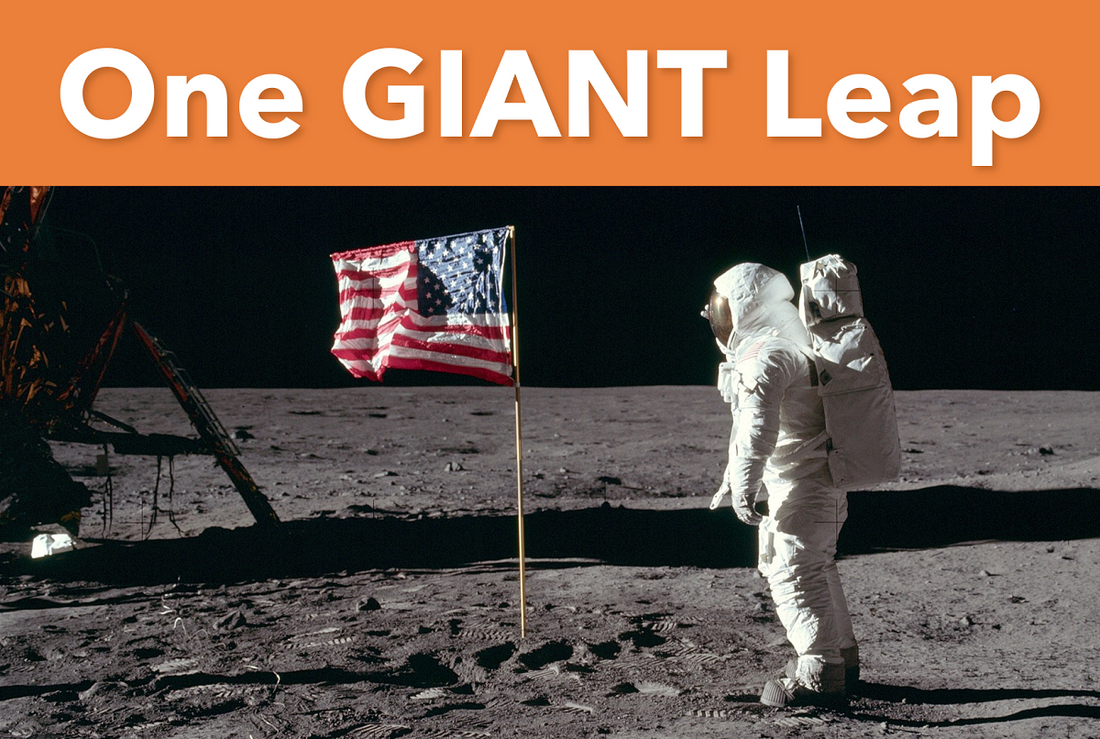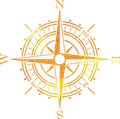
One GIANT Leap
This July 20th, we’d like to celebrate and remember the brave Old Salts who carried out the Apollo 11 mission to land humankind on the moon.
 Apollo 11 (July 16–24, 1969) was the spaceflight that first landed humans on the Moon. Commander Neil Armstrong and lunar module pilot Buzz Aldrin landed the Apollo Lunar Module on July 20, 1969. They spent about two hours and 15 minutes together outside the spacecraft, and collected nearly 50 lbs of lunar material to bring back to Earth. Command module pilot Michael Collins flew the Command Module alone in lunar orbit while they were on the Moon's surface.
Apollo 11 (July 16–24, 1969) was the spaceflight that first landed humans on the Moon. Commander Neil Armstrong and lunar module pilot Buzz Aldrin landed the Apollo Lunar Module on July 20, 1969. They spent about two hours and 15 minutes together outside the spacecraft, and collected nearly 50 lbs of lunar material to bring back to Earth. Command module pilot Michael Collins flew the Command Module alone in lunar orbit while they were on the Moon's surface. Apollo 11 was launched by a Saturn V rocket from Kennedy Space Center on Merritt Island, Florida, on July 16, the fifth crewed mission of NASA's Apollo program. The Apollo spacecraft had three parts: a Command Module “Columbia” with a cabin for the three astronauts, the only part that returned to Earth; a service module, which supported the command module with propulsion, electrical power, oxygen, and water; and a Lunar Module “Eagle”. An estimated one million spectators watched the launch of Apollo 11 from the highways and beaches in the vicinity of the launch site. The launch was televised live in 33 countries, with an estimated 25 million viewers in the United States alone.
Apollo 11 was launched by a Saturn V rocket from Kennedy Space Center on Merritt Island, Florida, on July 16, the fifth crewed mission of NASA's Apollo program. The Apollo spacecraft had three parts: a Command Module “Columbia” with a cabin for the three astronauts, the only part that returned to Earth; a service module, which supported the command module with propulsion, electrical power, oxygen, and water; and a Lunar Module “Eagle”. An estimated one million spectators watched the launch of Apollo 11 from the highways and beaches in the vicinity of the launch site. The launch was televised live in 33 countries, with an estimated 25 million viewers in the United States alone.After being sent to the Moon by the Saturn V, the astronauts traveled for three days until they entered lunar orbit. Armstrong and Aldrin then moved into Eagle and landed in the Sea of Tranquility on July 20. The astronauts used Eagle's ascent stage to lift off from the lunar surface and rejoin Collins in the command module. They jettisoned Eagle before they performed the maneuvers that propelled Columbia out of the last of its 30 lunar orbits onto a trajectory back to Earth. They returned to Earth and splashed down in the Pacific Ocean on July 24 after more than eight days in space.
 Armstrong's first step onto the lunar surface was broadcast on live TV to a worldwide audience. He described the event as "one small step for man, one giant leap for mankind." Apollo 11 effectively proved US victory in the Space Race to demonstrate spaceflight superiority, by fulfilling a national goal proposed in 1961 by President John F. Kennedy, "before this decade is out, of landing a man on the Moon and returning him safely to the Earth."
Armstrong's first step onto the lunar surface was broadcast on live TV to a worldwide audience. He described the event as "one small step for man, one giant leap for mankind." Apollo 11 effectively proved US victory in the Space Race to demonstrate spaceflight superiority, by fulfilling a national goal proposed in 1961 by President John F. Kennedy, "before this decade is out, of landing a man on the Moon and returning him safely to the Earth."Eagle landed on Sunday July 20 after which Armstrong spoke the words, "Houston, Tranquility Base here. The Eagle has landed." Two and a half hours after landing, before preparations began for the EVA, Aldrin radioed to Earth: “This is the LM pilot. I'd like to take this opportunity to ask every person listening in, whoever and wherever they may be, to pause for a moment and contemplate the events of the past few hours and to give thanks in his or her own way.”
The schedule for the mission called for the astronauts to follow the landing with a five-hour sleep period, but they chose to begin preparations for the EVA early, thinking they would be unable to sleep. Six and a half hours after landing, Armstrong stepped off Eagle's footpad and declared: "That's one small step for man, one giant leap for mankind."
Mr. Collins, the often forgotten astronaut, remained in orbit, 60 miles above the moon in the Apollo command module, waiting for his crewmates to return from the lunar surface.

Over the years, many reporters have asked if he felt lonely in the solitude of the command module. However, he never felt that way. “I had this beautiful little domain,” Mr. Collins said. “It was all mine. I was the emperor, the captain of it, and it was quite commodious. I had warm coffee, even.” Unlike half a billion people on Earth, Mr. Collins did not see the broadcast of Mr. Armstrong’s first steps on the moon.

Before dawn on July 24, the aircraft carrier USS Hornet launched four Sea King helicopters and three Grumman E-1 Tracers. Two of the Sea Kings carried divers and recovery equipment. The third carried photographic equipment, and the fourth carried a decontamination swimmer and flight surgeon. Columbia's drogue parachutes were deployed soon upon entry into the atmosphere, which was observed by the helicopters. Seven minutes later Columbia struck the water 13 nautical miles from Hornet in 6 ft seas and winds at 17 knots. During splashdown, Columbia landed upside down but was righted within ten minutes. A diver from the Navy helicopter hovering above attached a sea anchor to prevent it from drifting. More divers attached flotation collars to stabilize the module and positioned rafts for astronaut extraction.
This July 20, we at Old Salt Coffee Hoist our Mugs in honor of the thousands of men and women who contributed to the successful landing of humans on the moon. Especially the Old Salts, Neil Armstrong, Buzz Aldrin, Michael Collins, and the Sailors and Airmen attached to the USS Hornet.

